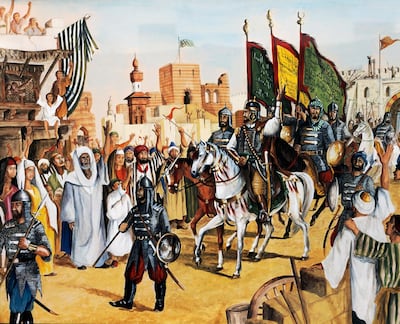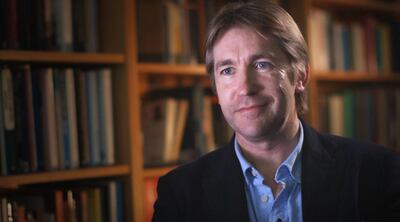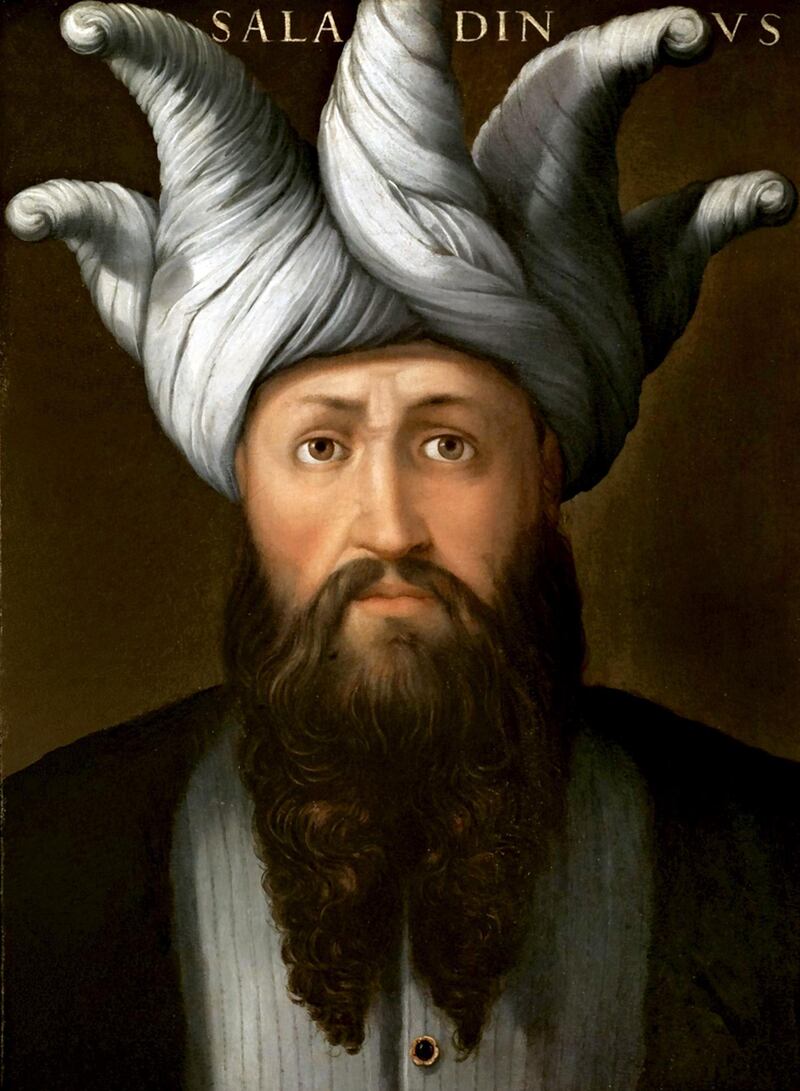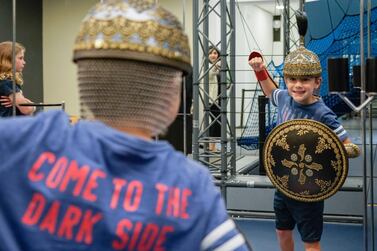In the mid-1990s, bath mats and rugs were on sale in Iraq with the picture of Saddam Hussein emblazoned on them next to that of the great 12th-century leader Saladin. A computer game-like cartoon, currently popular among Malaysian teenagers, retells Saladin's battles to reclaim Jerusalem from the Crusaders. You yourself might have been stuck in traffic along Salah Al Din Street in Deira, Dubai. Why does this historical figure, a man whose military triumphs were reversed in his own lifetime, have such contemporary relevance?
This is the central question that British academic Jonathan Phillips sets out to answer in his new biography, The Life and Legend of the Sultan Saladin.
The idea, he says, was sparked back in 2001, after the 9/11 attacks on the World Trade Centre in New York. In the immediate aftermath, then president George W Bush announced air strikes against Al Qaeda, with the caveat: "This crusade, this war on terrorism is going to take a while."
"I remember very well where I was when I heard it," says Phillips, a boyishly enthusiastic military historian at Royal Holloway university in London. "I was shaving and had the radio on in the background. I heard George Bush mention the crusades – and I thought, oh God, this is disastrous.
"He was so disdainful about wanting to learn about the people of the Middle East. He was just feeding into [Osama] bin Laden's hands. The fact that Bush himself used the word was calamitous for the image of the West. It gave it a clash of civilisations feel: that the West is against Islam."
Saladin and the Crusades persisted as a potent symbol in the Middle East throughout the 20th century, particularly during calls for Arab unity. Gamal Abdel Nasser invoked the period as a means to call for a united Arabia and the Palestinian struggle for statehood often used the spectre of the Crusades to suggest history was repeating itself.

Among the memories of the Crusades, Saladin is the rallying figure. In 1167 the warrior referred to as Salah Al Din in the region, recaptured Jerusalem from the Frankish invaders. Rather than executing its inhabitants, the standard course of action for military conquerors of the time, he allowed them to live if they paid a fine. He also united the Arab regions, playing various sides off one another to first wrest control of Egypt – then the wealthiest Arab country – and ultimately to unite parts of what is modern-day Palestine, Lebanon, Syria and Iraq.
Saladin showed clemency after the taking of Jerusalem, thus establishing for himself a unique legacy in both the region and the West. The warrior epitomised chivalry and honour, thereby drawing praise in Europe: Phillips found instances of children in the 1200s bearing the name Saladin in – of all places – Oxfordshire.
Though his star has dipped since then in the West, Phillips became fascinated by how Saladin has lived on as a potent symbol in the region – he was inspired by the Iraqi bath mats, as well as a popular ballet about the leader that he saw in Syria in 2009. After years of writing about the exploits of the Crusades, the author knew his limitations when turning his attention to the towering figure on the other side. "I am a historian from a western perspective, so I was very nervous about doing this," he admits. "I don't speak Arabic. My background is in the sources. I felt very outside my safety net."

The book he produced is a richly textured tale of the ruler: full of the battle scenes for which the Crusades are best known, and amplified by textural details about life in the Arab region in the 1100s, such as the ceremonial measuring of the Nile reaching its peak, the parade for which Saladin symbolically led as new leader of Egypt in 1181. Other excerpts tell of the fantastic wealth of the period in the country, such as the rubies, emeralds, sapphires, crystal, satin garments, gold-embroidered black carpets and gilt cups Saladin paid as tribute to his former mentor and predecessor, Nur ad-Din. Other stories show Saladin's famous clemency towards women. During the siege of the city of Acre, for example, thieves snuck into a Frankish camp and stole a three-month-old infant in the night. Moved by the mother's story, Saladin tracked down the infant, who had by then been sold, and returned him to her.

Though the existing literature around the figure is extensive, Phillips’s biography was helped by several new translations from contemporary Arabic sources.
The work of established scholars such as Carole Hillenbrand, who published an important study in 1999, and regional writers such as Amin Maalouf, have both been crucial.
For his biography, Phillips used new translations of economic records, a contemporaneous medical dictionary, and memoirs of people close to Saladin, such as Baha ad-Din, who like the former, was an Iraqi Kurd. He became part of the warrior's inner circle, accompanying him to the Siege of Acre and later writing a biography of the figure.
Saladin, who was born in what is now Turkey, founded the Ayyubid dynasty. Though taking Jerusalem is his most famous moment, he also united the Arab world, first taking control of Egypt and by the end of the 1100s, ruling over what is now Egypt, Palestine, Iraq, Syria and parts of Turkey. "It's so much more complex," says Phillips. His initial interest in the Medieval period was sparked by his maternal grandfather, who worked as a surveyor in Lebanon, and came back with stories of camping with the Bedouin. "It's not A against B. Saladin spent 13 years fighting his fellow Muslims, both Sunni and Shia. He does deals with the Christians, keeps quiet from time to time, then enters into truces with the Crusaders. And you've got Crusaders under Muslim rule, Muslims under Crusader rule, huge populations of Eastern orthodox and Maronites under Roman Catholic rule, and some of them living in territories under Muslims as well.
“You try getting Syria, Egypt and Iraq to work together,” he says. “It wasn’t easy. It took a very charismatic, skilled person to make that work.”








